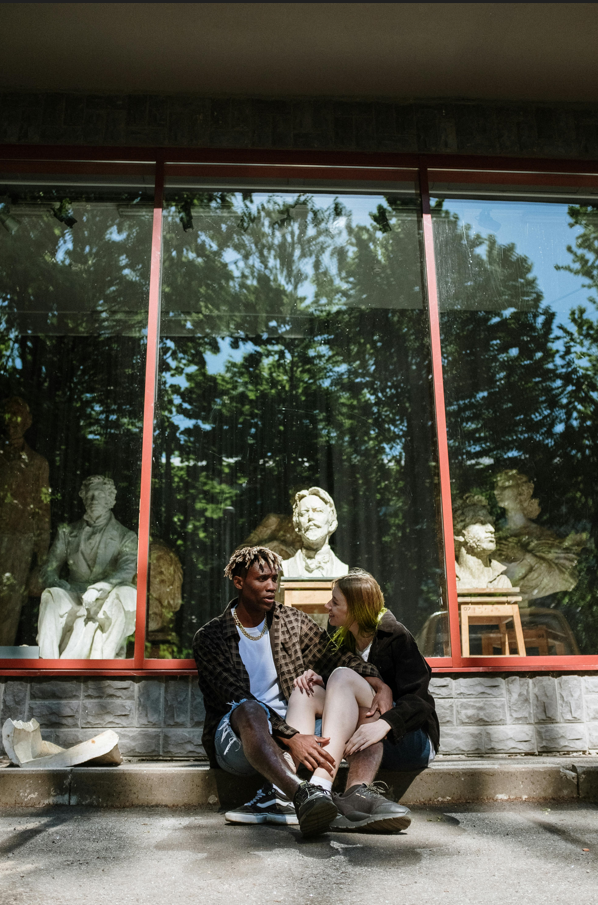Consuming cultural spaces and young people’s sense of belonging
Young people live in a world characterised by multiple crises and global emergencies in which a sense of belonging is increasingly difficult to achieve. Younger generations have experienced extreme levels of uncertainty in the context of the Global Financial Crisis and during the Covid-19 crisis. In addition, the digitalisation of young people’s everyday lives and new forms of communication have intensified the complexity that they have to deal with. In this context, the research project LOCUS “sociaL media, yOuth and Consumption of cUltural Spaces” (funded by the Hellenic Foundation for Research and Innovation, Greece) explores the role of cultural spaces in youth experiences and in the ways, young people come to belong to the society in which they live.

Belonging in the consumer society
It is within the consumer society that young people construct their identities in relation to their needs for distinguishing themselves among peers as well as belonging in groups. According to Featherstone (1991), it is the consumer culture that has played a great role in the transition to a way of life in which consumer choices are increasingly fluid and predetermined status groups are less significant. It could be argued that this point is linked with Maffesoli’s (1996) notion of neo-tribes. In this sense, young people’s self-identification consumer-related choices affect their ephemeral but meaningful membership to various groups. However, Bauman’s (1992) position is more critical in relation to neo-tribes as a source of collective belonging. In this way, young people are responsible for themselves as individuals and they have to manage the “sources of the market” accordingly in order to navigate in contemporary societies. From a different perspective, Warde (1994), suggests that group membership affects the selection of lifestyles as well as that belonging comes before identity formation. What is important here is that in their quest for belonging, young people are not only engaged in consuming products but also through the spaces and places of consumption.

Space, place and the sense of belonging
It could be argued that mobility, digitalisation and globalisation have altered significantly the ways young people experience both temporal and spatial changes. Perhaps consumption has gained such importance in the contemporary ways of living in the city, so that young people are somehow engaged in a process of maximising the benefits from their urban experiences as a sense of affirmation. Urban spaces and the opportunities to consume might offer young people a spatial experience that they aspire to engage with. However, the role of consumption could be contested. It might be that spaces of consumption can intensify social divisions and uncover aspects of social exclusion within the city. The satisfactions that consumption provides are a fundamental element of young people’s relationship to spaces and places. This is something that I consider also really important in the context of the LOCUS project. In this work, we try to understand the role of consumption in relation to youth experiences (especially cultural experiences) in the city. In this way, I think it’s crucial to focus on the socio-cultural processes of how young people choose what to engage with and consume. In LOCUS, we are interested in cultural spaces in Greece and the ways young people interact and engage with such sites.

Cultural spaces and youth experiences of belonging
Steven Miles (2021) points out the importance of understanding cultural spaces as crucial socio-economic entities in our contemporary societies as well as the effects of wider alterations around culture; cultural spaces are the contemporary sites in which performances of the experience society unfold. In the context of the research project, we began by focusing on three cultural spaces in Greece: the Onassis Stegi, the Stavros Niarchos Foundation Cultural Center and the Acropolis Museum. Our intention was to understand how young people consume such places, in what ways the feel they belong and how they construct their identities. In this multi-method project, young people during the photo-elicitation interviews expressed their views and feelings about their cultural experiences. It was really interesting that they highlighted how they enjoy being in such places due to the common interests with other people. For our young participants, visiting the specific places made them feel more relaxed, provide them with a safe environment and functioned as a source of inspiration. However, we need to be critical and take into account what Bourdieu and Darbel (1991: 112) argue about cultural sites; cultural spaces “reinforce for some the feeling of belonging and for others the feeling of exclusion”. Young people who possess the necessary cultural and socio-economic capital, through cultural consumption, might be able to benefit socially and culturally. At the same time, we need to question what this means for young people who are socially and culturally excluded and the impact of this lack of sense of belonging in relation to such cultural spaces in their lives.
Bio
Kostas Theodoridis is a Postdoctoral Fellow and Principal Investigator of the research project LOCUS in the Department of Communication, Media and Culture at Panteion University of Social and Political Sciences. He is also an Adjunct Lecturer in the Department of Sociology at National and Kapodistrian University of Athens. He completed his PhD in the Department of Sociology at Manchester Metropolitan University.
Funding note
The research project was supported by the Hellenic Foundation for Research and Innovation (H.F.R.I.) under the “3rd Call for H.F.R.I. Research Projects to support Post-Doctoral Researchers” (Project Number: 7767).
References
Bauman, Z. (1992). Intimations of Postmodernity. London: Routledge.
Bourdieu, P. and Darbel, A. (1991). The Love of Art: European Art Museums and their Public. Cambridge: Polity Press.
Featherstone, M. (1991). Postmodernism and Consumer Culture. London: SAGE Publications Ltd.
Maffesoli, M. (1996). The Time of Tribes: The Decline of Individualism in Mass Society. London: SAGE Publications Ltd.
Miles, S. (2021). The Experience Society: Consumer Capitalism Rebooted. London: Pluto Press.
Warde, A. (1994). Consumption, Identity-Formation and Uncertainty. Sociology, 28(4), 77-898. https://doi.org/10.1177/0038038594028004005.





